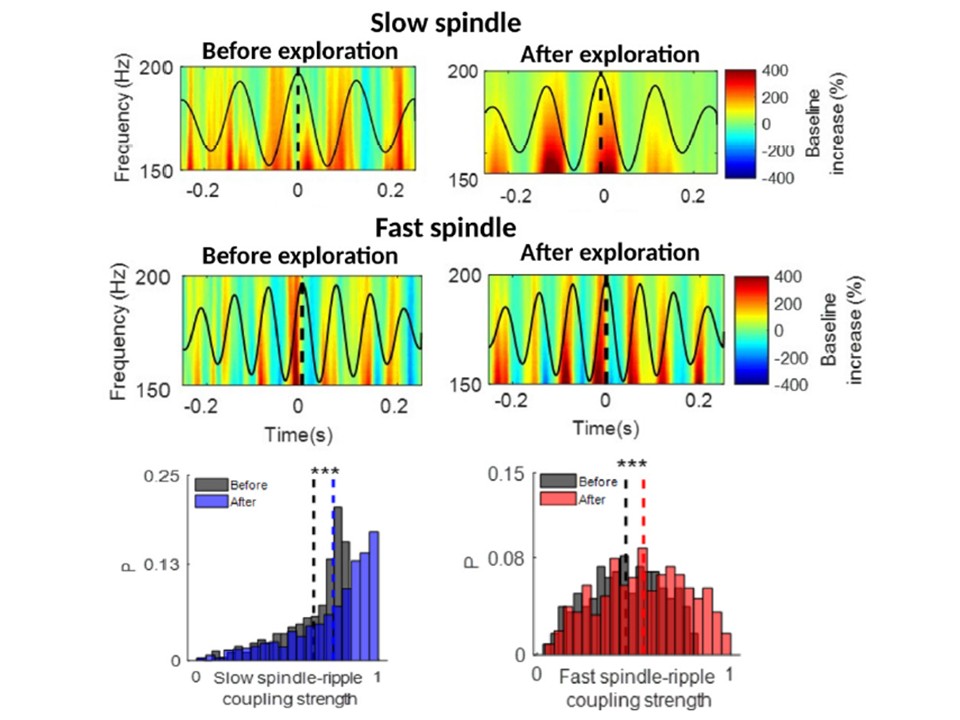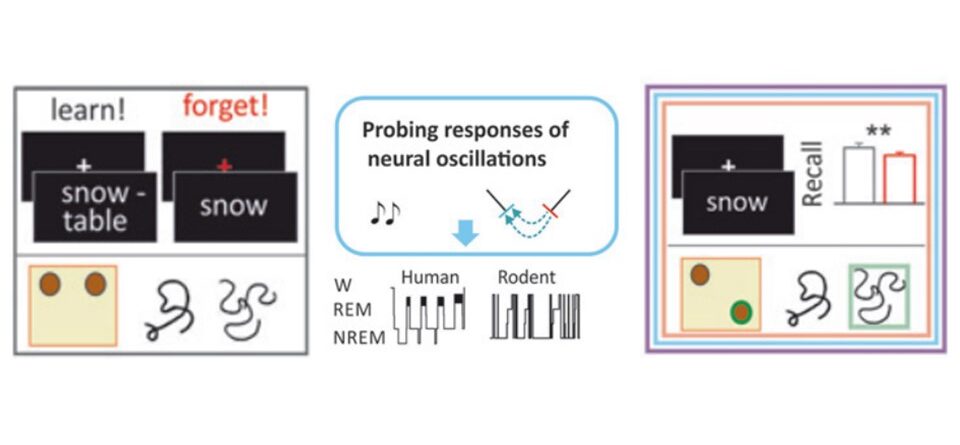Research
Sleep rhythms and memory consolidation
One important function of sleep is its role in memory consolidation. A striking feature of cortical electroencephalography (EEG) and local field potentials during slow-wave sleep (SWS) and anesthesia is the large-amplitude, ~1 Hz oscillation known as the ‘slow oscillation‘ (SO). Thalamocortical sleep spindles which are faster waxing and waning oscillations, are another endogenous rhythm during SWS that are tightly linked to the processing of memories during sleep. The transition from the Down-State to the Up-State of SOs is associated with the occurrence of fast spindles (12-16 Hz). Hippocampal ripples (~ 200 Hz) occur in temporal coordination with spindle events and/or individual spindle oscillations. Nesting of these different NREM sleep rhythms is proposed basic for memory consolidation.
We use multidisciplinary research approaches to understand the mechanism underlying the temporal hippocampal-thalamocortical interactions required for successful memory consolidation. We particularly record EEG in humans with auditory closed-loop stimulation to investigate the causal role of SO-spindle coupling in memory consolidation. We also conduct extracellular multi-electrode array recordings in rodents to study the multi-regional neuronal interactions during sleep and anesthesia by applying electrical stimulation. In addition, we are interested in developing physics style theories to explain the experimental observations and make predictions.


Electrical and auditory brain stimulation
Transcranial electrical stimulation and deep brain stimulation are popular neuromodulation techniques used for treating several neuropsychiatric disorders. We are particularly interested in developing devices and techniques for noninvasive deep brain electrical stimulation and efficient neural stimulation using multidisciplinary research approaches from neuroscience, electrical engineering and physics. We work on efficient brain stimulation techniques both experimentally by extracellular recordings with electrical stimulation in rodents and computationally by modeling the effect of electrical stimulation from a single neuron to neural networks. Our research also aims to understand the interaction between the endogenous and exogenous electric fields in the brain. Both electrical and auditory stimulation can manipulate sleep rhythms and enhance memory processing. However, not all studies using exogenous stimulation to boost sleep rhythms have been successful. One of our main aims is to design efficient closed-loop auditory stimulation protocols to improve memory consolidation during sleep. Overall, our goal is to develop efficient individualized stimulation methods to generally enhance efficacy of cognitive sleep function, and to potentially develop noninvasive neurotherapeutics for treatments of patients with memory problems.

